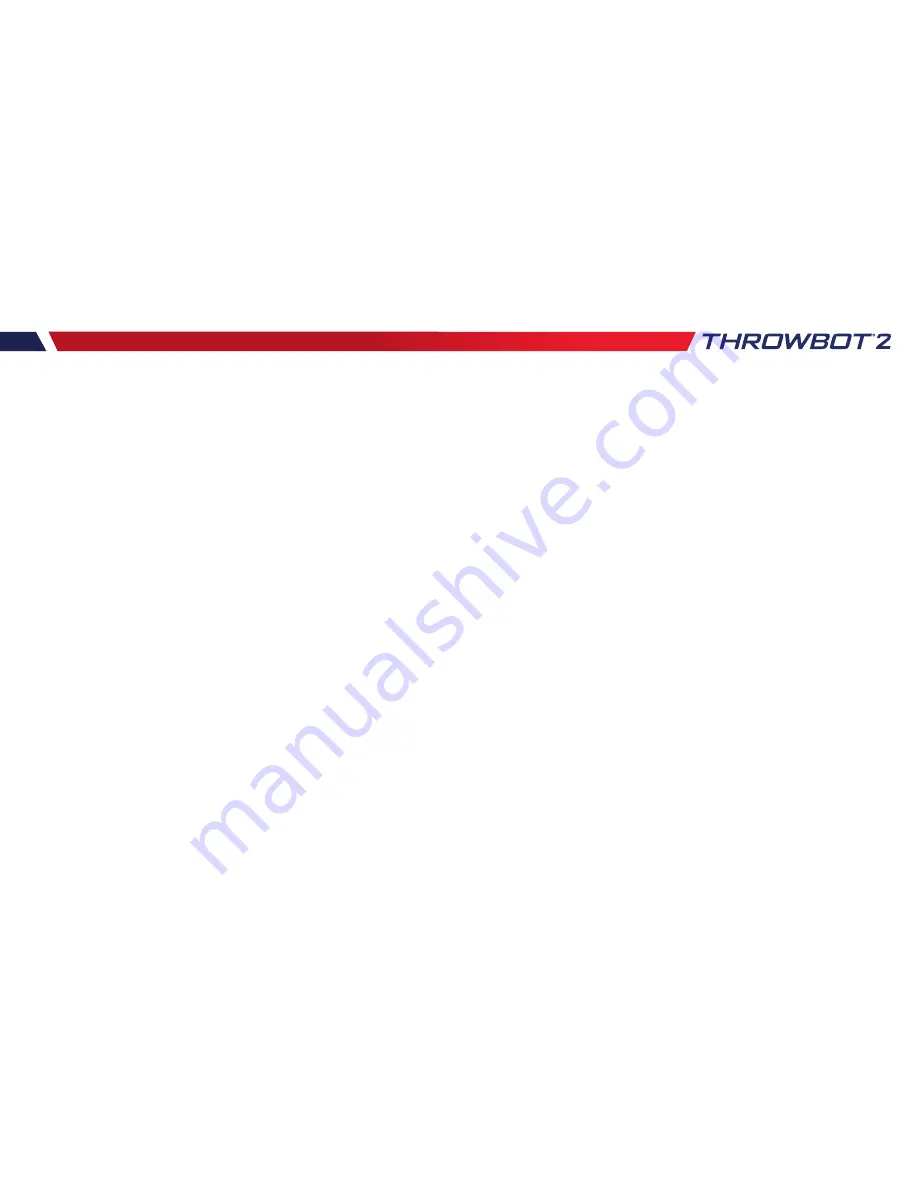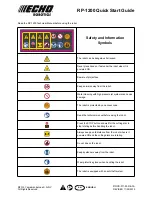
19
towed, or to carry more weight than is towed. Carried
weight improves traction and doesn’t affect speed or
battery life as much as towed weight.
• Ensure that the center of gravity of any payload
mounted to the top of the robot is somewhat behind
the wheel axles. Placing the payload too far forward
can cause the robot to tip forward.
• When towing, tether the towed payload to the tether
point close to the robot’s body (rather than the tether
point at the end of tail). This makes turning much easier.
• If towing from the tether point at the end of the tail, if
a sharp turn needs to be made, the tow rope can be
slackened by backing the robot up approximately 12
"
(30 cm). Then, the robot can freely turn.
• When towing, to prevent tangling of the tow rope,
do not back the robot up any more than necessary to
make turns.
NOTE: The payload mounting points on the back and top of the
Throwbot 2 robot are designed for use with a standard 4-40 screw.
If the robot is used in Carry and Tow configuration
without any payload or the Picatinny rail attached, it
can be thrown. Sometimes, the robot may land with the
antennas oriented in a way that makes it difficult for the
robot to right itself. If this happens, rotating the robot
and/or moving it backwards for some distance will push
the antennas to a better position and allow the robot to
self-right when moving forward. This is not an issue in the
other configurations because the larger wheels give the
antennas more room to bend out of the way.
Everything needed to convert to the Carry and Tow
configuration comes with a Deluxe Conversion Kit or the
Carry and Tow Conversion Kit.
RUGGED XL (RXL) CONFIGURATION
The Rugged XL configuration is designed to allow the
system to climb over 4
"
/10 cm obstacles. See page 10 for
more performance differences in this configuration.
Everything needed to convert to the Rugged XL (RXL)
configuration comes with a Deluxe Conversion Kit or the
Rugged XL (RXL) Conversion Kit.
CARRY AND TOW (CT) CONFIGURATION CONTINUED
















































